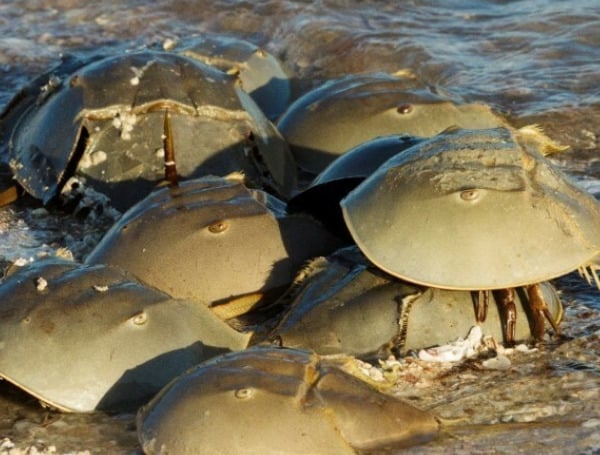It’s almost spring and that means it’s peak mating season for horseshoe crabs. Help biologists with the Florida Fish and Wildlife Conservation Co
It’s almost spring and that means it’s peak mating season for horseshoe crabs. Help biologists with the Florida Fish and Wildlife Conservation Commission (FWC) gather valuable information about these ancient creatures by reporting sightings on the online survey.
Horseshoe crabs mate by pairing up, with the smaller male attached to the larger female. They then crawl onto the beach up to the high tide line where the female digs a nest and lays her eggs, all while the male is attached and fertilizing the freshly laid eggs.
They mate year-round, but it is most common to see mating groups along the shore of sandy, lower wave action beaches in March and April as well as September and October. Beachgoers will have the most luck spotting horseshoe crabs around high tide within a few days of a new or full moon.
Reporting horseshoe crab sightings provides valuable information about habitat use, population distribution, and environmental conditions for nesting to the FWC.
Although horseshoe crabs have existed for more than 450 million years, scientists are still learning about Florida populations. Public sighting information helps FWC researchers target nesting beaches for the Florida Horseshoe Crab Watch Program, a citizen science-based initiative to collect data throughout the state.
If you see a horseshoe crab on its back, you can help it flip back over by gently picking it up (holding both sides of the shell), turning it over, and releasing it back into the water. Simple actions such as this help conserve this species and the many other species that depend on it.
The FWC asks the public to report sightings by visiting MyFWC.com/research and clicking on “Crustaceans” then “Horseshoe Crabs” and selecting “Report Your Nesting Horseshoe Crab Sighting”.
Visit Tampafp.com for Politics, Tampa Area Local News, Sports, and National Headlines. Support journalism by clicking here to our GoFundMe or sign up for our free newsletter by clicking here.
Android Users, Click Here To Download The Free Press App And Never Miss A Story. Follow Us On Facebook Here Or Twitter Here.



COMMENTS